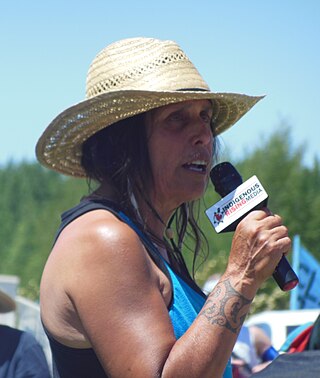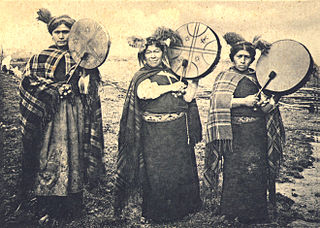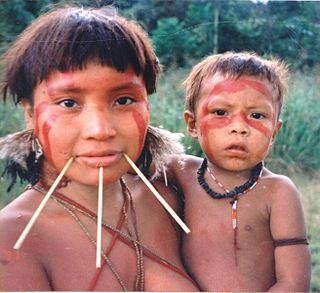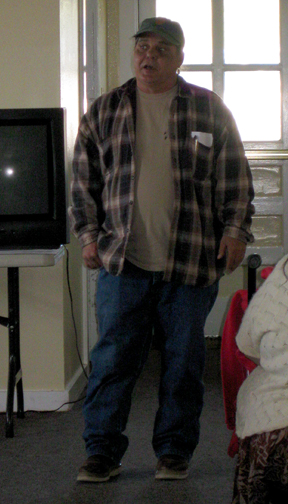
Winona LaDuke is an American economist, environmentalist, writer and industrial hemp grower, known for her work on tribal land claims and preservation, as well as sustainable development.
Spirit of place refers to the unique, distinctive and cherished aspects of a place; often those celebrated by artists and writers, but also those cherished in folk tales, festivals and celebrations. It is thus as much in the invisible weave of culture as it is the tangible physical aspects of a place or its interpersonal aspects.
The Gamilaroi, also known as Gomeroi, Kamilaroi, Kamillaroi and other variations, are an Aboriginal Australian people whose lands extend from New South Wales to southern Queensland. They form one of the four largest Indigenous nations in Australia.
Native American women encounter a disproportionate level of sexual violence from verbal abuse to physical harm, including but not limited to domestic and sexual assaults. Such violations not only result in lasting detrimental effects on the individuals subjected to them but also reverberate throughout their entire community, exacerbating social challenges.

A tribal chief, chieftain, or headman is the leader of a tribal society or chiefdom.

Duodji is a traditional Sami handicraft, dating back to a time when the Sami were far more isolated from the outside world than they are today. Duodji tools, clothing, and accessories are intended to primarily be functional, but may also incorporate artistic elements. Some examples include knives, cases, ladies' bags, wooden cups, and articles of clothing. Duodji items were made to be used in an everyday work environment.
Joyce Chopra is an American director.

The religion of the indigenous Mapuche people of south-central Chile and southwestern Argentina is an extensive and ancient belief system. Legends and myths are common to the various groups that make up the Mapuche people. These myths tell of the creation of the world and the various deities and spirits that reside in it.

The National Congress of American Indians (NCAI) is an American Indian and Alaska Native rights organization. It was founded in 1944 to represent the tribes and resist U.S. federal government pressure for termination of tribal rights and assimilation of their people. These were in contradiction of their treaty rights and status as sovereign entities. The organization continues to be an association of federally recognized and state-recognized Indian tribes.
The red road is a modern English-language concept of the right path of life, as inspired by some of the beliefs found in a variety of Native American spiritual teachings. The term is used primarily in the Pan-Indian and New Age communities, and rarely among traditional Indigenous people, who have terms in their own languages for their spiritual ways. Native Americans' spiritual teachings are diverse. With over 500 federally-recognized tribes in just the US, while some regional practices and beliefs might be similar, the cultures are highly individualized. Individual ceremonies and particular beliefs tend to be unique to the people of these diverse bands, tribes and nations.

The Yanomami, also spelled Yąnomamö or Yanomama, are a group of approximately 35,000 indigenous people who live in some 200–250 villages in the Amazon rainforest on the border between Venezuela and Brazil.

Two-spirit is a modern, pan-Indian umbrella term used by some Indigenous North Americans to describe Native people in their communities who fulfill a traditional third-gender ceremonial and social role in their cultures.
Beatrice Medicine was a scholar, anthropologist, and educator known for her work in the fields of Indigenous languages, cultures, and history. Medicine spent much of her life researching, teaching, and serving Native communities, primarily in the fields of bilingual education, addiction and recovery, mental health, tribal identity, and women's, children's, and LGBT community issues.
The Indigenous Environmental Network (IEN) is a coalition of indigenous, grassroots environmental justice activists, primarily based in the United States. Group members have represented Native American concerns at international events such as the United Nations Climate Change conferences in Copenhagen (2009) and Paris (2016). IEN organizes an annual conference to discuss proposed goals and projects for the coming year; each year the conference is held in a different indigenous nation. The network emphasizes environmental protection as a form of spiritual activism. IEN received attention in the news as a major organizer of the fight against the Keystone Pipeline and the Dakota Access Pipeline in the Dakota Access Pipeline protests.
Native American feminism or Native feminism is, at its root, understanding how gender plays an important role in indigenous communities both historically and in modern-day. As well, Native American feminism deconstructs the racial and broader stereotypes of indigenous peoples, gender, sexuality, while also focusing on decolonization and breaking down the patriarchy and pro-capitalist ideology. As a branch of the broader Indigenous feminism, it similarly prioritizes decolonization, indigenous sovereignty, and the empowerment of indigenous women and girls in the context of Native American and First Nations cultural values and priorities, rather than white, mainstream ones. A central and urgent issue for Native feminists is the Missing and murdered Indigenous women crisis.
Indigenous feminism is an intersectional theory and practice of feminism that focuses on decolonization, Indigenous sovereignty, and human rights for Indigenous women and their families. The focus is to empower Indigenous women in the context of Indigenous cultural values and priorities, rather than mainstream, white, patriarchal ones. In this cultural perspective, it can be compared to womanism in the African-American communities.

Yolanda Broyles-González is a Yaqui-Chicana professor, writer, and activist. Her teaching and research focus on Native American culture in addition the popular performance genres of the US-Mexico borderlands.

Native American fashion is the design and creation of high-fashion clothing and fashion accessories by Native Americans in the United States. This is a part of a larger movement of Indigenous fashion of the Americas.
Dr. Krystal Tsosie (Diné) is a Navajo geneticist and bioethicist at Arizona State University and activist for Indigenous data sovereignty. She is also an educator and an expert on genetic and social identities. Her advocacy and academic work in ameliorating disparities in genetics through community-based participatory research has been covered by various national news sources, including The New York Times, Nova, The Washington Post, NPR, The Atlantic, Forbes, and The Boston Globe.

Richard Lee Bugbee was a Native American of the Payómkawichum (Luiseño) people and culture keeper and ethnobotany instructor in San Diego, California.









